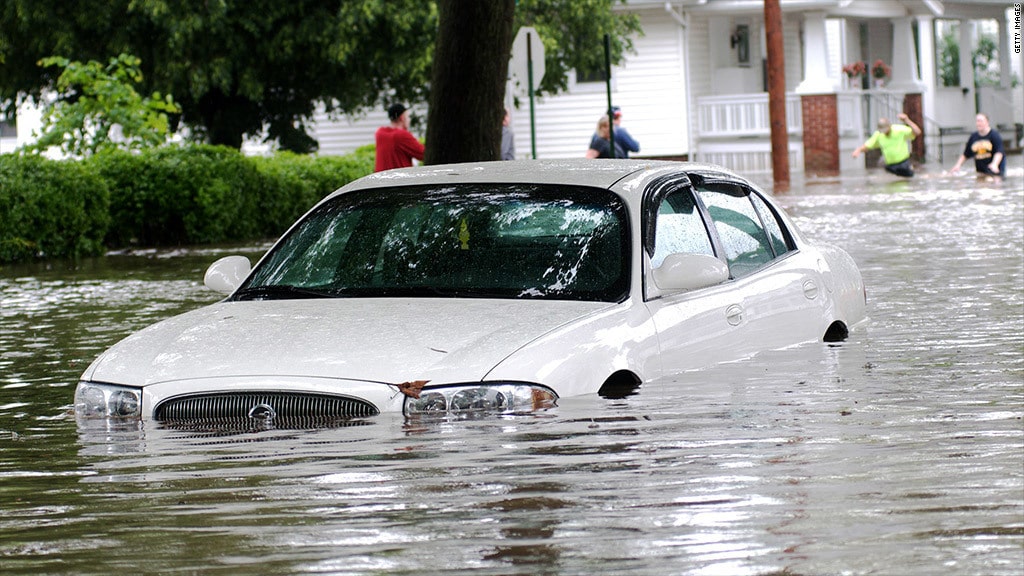If you’re planning to buy a used car or get it from someone to sell or offer them to buy, knowing how to tell if a car has been in a flood is more important than ever. Of course, if you don’t check carefully and take timely preventive measures, what you get in return will inevitably worsen. The driving experience, the exchange effort, the money spent, the reputation, no matter what the circumstances and what role you play in the transaction, in the end, you cannot get anything back.
So without making you wait longer, let’s learn a few signs to inspect flooded car engines with Car From Japan to promptly avoid and make the smart choices for the next transaction.
Contents
The Ultimate Guide On How To Tell If A Car Has Been In A Flood
A car that is flooded or has water damage is something that every driver needs to stay far away from if they want to save a significant amount of money and effort for later purchases or repairs. When being flooded, cars that are submerged in water are often classified as mass dead and must be demolished. However, some flood-damaged cars will eventually be turned over to used car lots. Estimated, about half of the damaged vehicles in many places are expected to be resold.
As a buyer, you should beware that not all dealers are willing to assist you with the repair when “your” vehicle was damaged before. Even if a car looks good and seems to run well, costly problems can arise later as corrosion continues to creep into the interior of critical components. These cars can cost your money more than ever. They can be dangerous to drive, and as a result, can even be fatal while nobody assures your safety on the road.
Unfortunately, it can be considerably hard to spot cars with water damage from the outside or by some short glances. But if you can recognize the unwelcomed signs within just the first test drive, it will surely help a lot. Here are some ways to determine if a car you are keeping an eye on owns a healthy engine or a soggy one.
Sniffing
The fastest way to detect whether a vehicle is flooded or not is to sniff it. It is not easy to completely get rid of a musty smell affected by flooding. And mold formation is a surefire sign showing that it has been exposed to significant amounts of water.
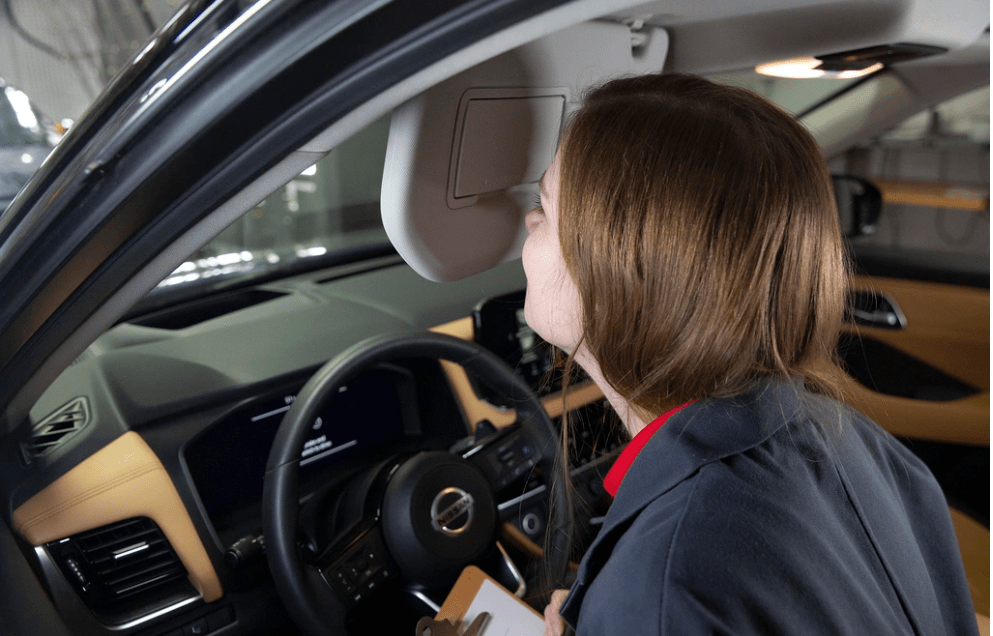
However, if you’re not so sure, close the windows and doors, sit inside, and take a deep breath. Alternatively, you may be surprised by the pleasant scent of the air freshener. But be aware that a strong air freshener can be a sign that the dealer is covering a less pleasant odor.
Feel Around
Along with your sense of smell, your touch is vital for sensing the excessive moisture in a used car. Water from flooding tends to accumulate in locations that even car dealers can miss.
Run your hand along the carpet and pat it in different places to determine the moisture range. If possible, peel back the carpet to see if you can see the wetness between it and the trunk. You can also see other signs such as rust, by looking under the car mats.
Remember to open the trunk and feel around the carpet at that spot. Then take out the spare tire and touch the material underneath as this is where water tends to accumulate.
Corrosion Signs
Corrosion is one of the most common problems with flooded cars. The damage you see today isn’t the only division of rust: Corrosion continues to corrode materials long after the car has dried.
Look for signs of metal corrosion both internally and externally. For example, if you see rust on screws, door hinges, hood springs, trunk latches, or brackets under the dashboard, you know those metals have had significant exposure to water. For an even more thorough examination, look at where the doors come into contact with the car body and check carefully. Corrosion usually occurs at that angle. Check all four doors, including the bottom, inside and out.
Finally, use a mirror and look under the seat to see if the springs are rusted. Use it again to check the underbody for peeling, corroded metal, and other signs of corrosion that can be hard to inspect in typical ways.
Waterlogged Fabrics
Car upholstery can also detect waterlogged coatings if examined closely. Carefully inspect all upholstery in the front, back, and under the seat for brown and watery spots.
Another clue is the quality of the rug. If the car is about 8 years old but the carpet spot new, there may something fishy. Likewise, if the car upholstery doesn’t seem to match with parts in different colors; or if they are faded, are brand new, or have patterns that don’t align, someone may have removed and replaced the water-logged patches for eye-covering. You should also check out the loose carpets with further scrutiny.
Don’t forget to compare the rugs to the upholstery on the doors and the roof to assure that they’re all the same tearing age and color.
Have a Test-drive
A compromised electrical system is a serious and potentially life-threatening danger inherent to cars exposed to water for extended periods. You’ll want to test the vehicle extensively to make sure all electrical components are working. Infotainment systems on newer cars are particularly susceptible to activity when they come into contact with water, like smartphones, because they use the same technology.
With the inspection, stick your head under the dash and gently bend the wires to see if they’re brittle. Doing so, you may have discovered water damage. However, the water damage signs to the rest of the electrical system are hard to notice, so you’ll need to take a test drive and test all the electronics.
As you turn on the engine, listen for unexpected sounds and use your eyes and nose to see if smoke appears anywhere. Make sure all dashboard lights are on, including the rear lights, the headlights, turn signals, and emergency flashers.
Also turn on the air conditioner, wipers, and lighter to see if they are working as expected. And don’t forget to listen to the radio. It is noisy, gives off a distorted sound, or has no sound at all. Anything abnormal happening to any part, even the smallest, could be caused by water damage.
Check the Oil
Changes in color and viscosity may indicate that water has entered the engine oil. If you’re used to checking the quality of your oil, you’ll be able to tell if a vehicle has been damaged by checking the engine oil.
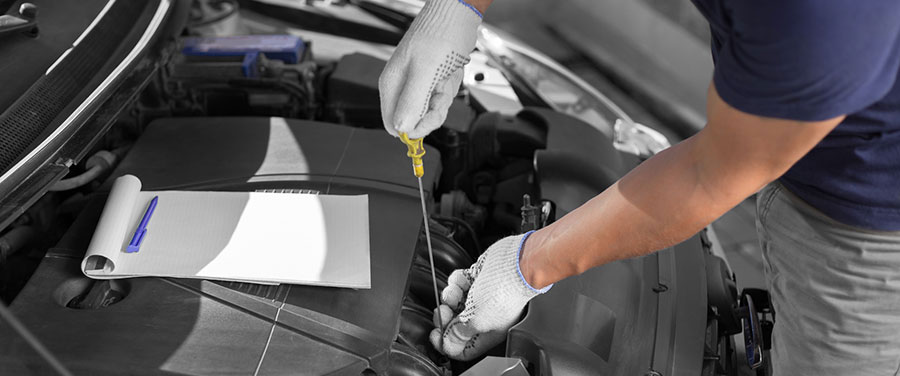
Sometimes, it can be compared to the color of coffee milk or chocolate milkshakes. Flood-affected oil may be pale when it should be dark and feel sticky to the touch.
While you’re inspecting the hood, also check the air filter paper. If it has water stains, that’s another clue that water has gotten in where it shouldn’t be.
Soggy Signs
There are some areas of the vehicle that will be difficult to dry even if someone is trying to cover up the flood damage. Take a closer look at all the lights the car has as these flooded cars problems. The headlights and taillights may appear foggy when water accumulates inside.
The same can be applied to the dashboard, interior, and exterior mirrors. If they appear foggy, there is moisture that has not yet evaporated.
Water tends to collect on the protrusion inside the wheel, so check for signs of dampness, corrosion, or water lines. Check doors and trunk for water stains; they indicate how much the vehicle may have been flooded.
Dirty Details
One of the most noticeable flooded cars problems while it is sinking (or drifting) in the flood is that the water flows will carry all the small debris, such as grass, mud, sand, and silt into the cabin. When you get through the flood, the water may recede, but a lot of debris will still be there. It’s hard to wipe and remove all of them.
When you want to test a second-hand car, you’ll want to look and check for possible places where mud and grass may remain after a flood. These include the following sections:
- Inside and under the glove compartment
- Engine crevices
- The trunk
- Under the spare tire
- Under the dashboard
- Below seats and in seating tracks
- Wheel wells
- Around wiring
If you find debris or small objects stuck in these areas, the vehicle may have been soaked in water for some time.
Let The Expert Inspect
A used car is also an investment, and you certainly don’t want to buy a damaged car that will cost you tons of money in the long run. If after checking it yourself, you’re still not sure whether is completely healthy or not, hire a professional.
A good mechanic will know exactly and detailedly where to look for signs of a flood-damaged car. For areas you may not know how to check, such as generators, some wiring, and pumps, a mechanic is a lifesaver.
The mechanic can also remove your wheel and inspect the brake system and wheel components, which are most likely parts to show marks from flash floods, such as silt and mud.
Can A Car Still Work After Being Flooded
The first thing you should avoid when you figure out your flooded car is to start the engine. When you start the engine filled with water, the cylinder block and pistons will be damaged excessively, leaving you with a worse car and an unpleasant feeling.
The level of water damage your car experiences will determine if it is repairable. If you drive through a pond on your way to work, the damage won’t be much, the brake linings are most likely to be damaged, and you can replace them.
On the other hand, if your car is submerged in water through the floorboards into the electrical area, your insurance company will most likely declare it a total loss. Do not misunderstand, there is still the possibility of drying it and changing the fluid in the car. But your car will still have electrical problems, musty odors, and seat deposits. All of these are repairable or whether your car is working after being submerged in water or not, depending on its model and how old it is. Older cars wouldn’t survive such a crash.
Cars that are completely submerged in water during a flood can be more expensive to repair than buying a new one. To avoid going down this rabbit hole, have the mechanic look at the car and get the extent of the damage. That’s when you can decide whether to repair or calculate your losses and buy a new car. But with the right insurance, you can be compensated.
Can You Save A Flooded Car
It depends on the type of water that flooded the car. If you live in a coastal area, your car may have been submerged in saltwater. If that’s the case, don’t even try to save it, as saltwater damages vehicles beyond repair.
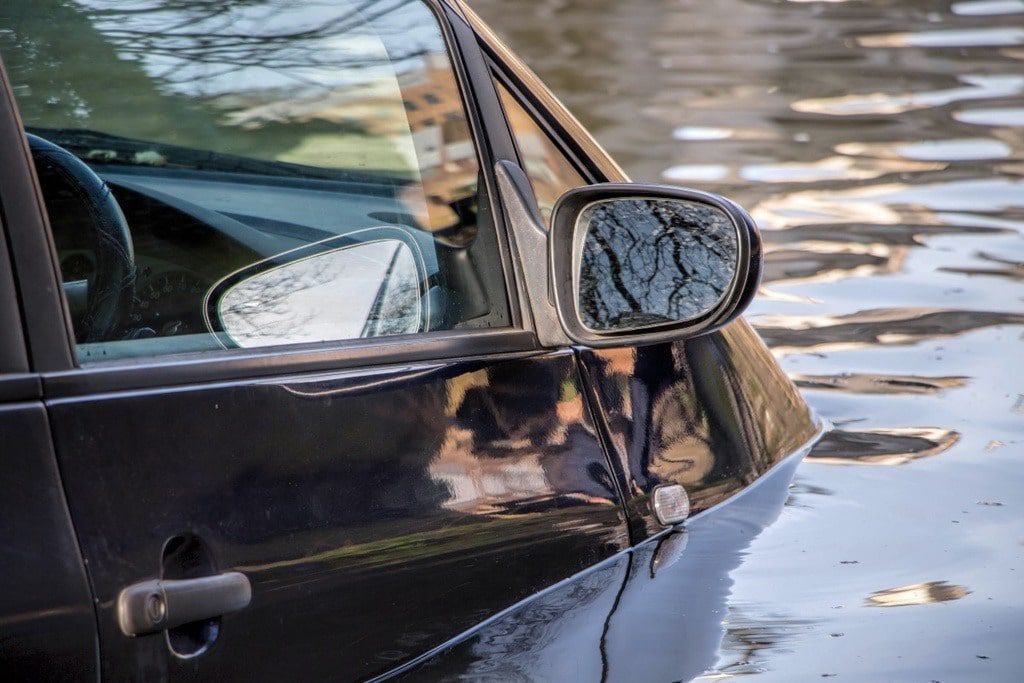
It does not help if you let a mechanic who has never dealt with a flooded vehicle take the task. Without experience in repairing flooded cars, there is no point in getting your mechanic to fix it because they will make it worse, and you will lose a lot of money plus your whole car.
Electrical problems in a flooded vehicle can cost you a lot of money. If water gets into your fuse box, controller, or module, you should replace the part immediately. The problem with such items is how expensive they are after big storms. You have to replace them because otherwise, they will cause a line break. They may work for a while and then eventually fail. You will also need to replace the battery cable and harness as they are critical areas. Moreover, the problem with a flooded vehicle comes with the water. Mud and silt are hard to get rid of in our car, and these factors always lead to problems. When you miss spots where mud has settled, it becomes difficult to control the damage that comes with it, such as mold.
Things To Do If Your Car Has Flood Damage
Here are several things you can do if you happen to find out that your car flooded with water.
Damage survey
When you find your car submerged in floodwater, see how much damage it could have suffered. Would you mind not starting your car while it is in this condition? Igniting the engine without knowing if there is water inside or not can be detrimental. When you start the engine with water, it can lead to a hydraulic blockage where the piston cannot compress as it should.
Dry the car as much as possible
When your car is flooded, the first thing you should do is make sure you get rid of as much moisture as possible. If you don’t dry your car, mold will grow and always smell musty. If your vehicle is still in a flooded area, take it to higher elevations with a towing service, then dry its entire body.
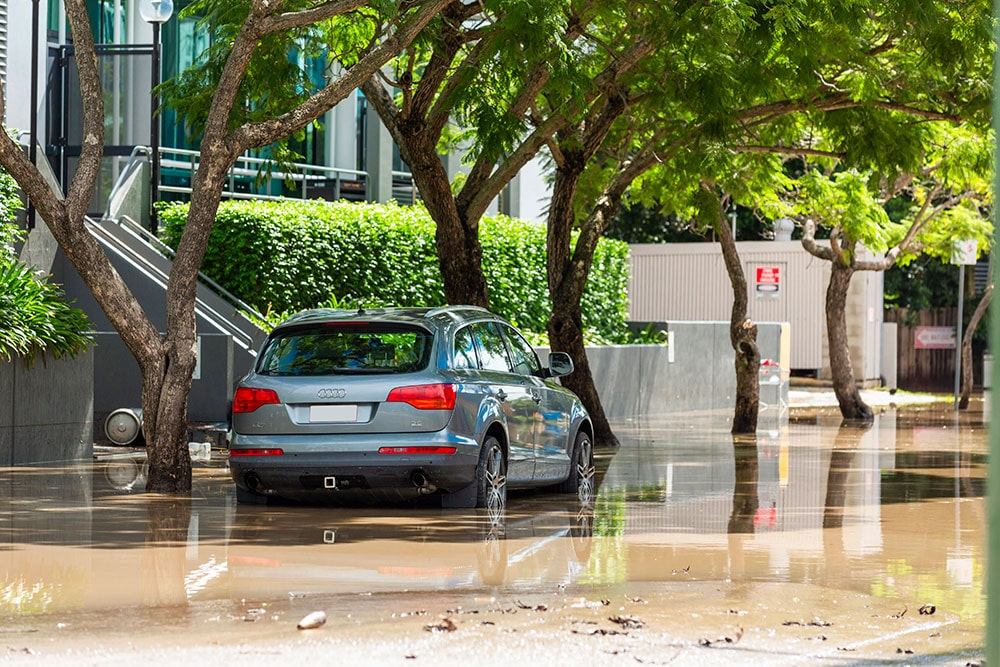
You can use a dry or wet vacuum to suck up any stagnant water. Frequent use of vacuum cleaners may result in electric shock. You can make sure to drain out as much water as possible. To dry the seats and cushions, always remember to use a dry towel.
Submit a claim
If you have comprehensive auto insurance, your insurance company will pay for the repair or the total value of the car. Most insurance only covers damage that is not very extensive and does not involve flood damage.
With a comprehensive insurance policy, you can call your dealer and let them know the condition of your vehicle so you can decide how to proceed. Remember that your comprehensive policy will cover most repairs from carpet to motor at the repair shop.
If your policy covers theft and fire, the chance is clear that it may also cover flooding. Review your insurance to be sure of what it covers and what it doesn’t.
Ventilate your car
If it’s a bright sunny day, you’re in luck. Open all car doors after drying and cleaning the car. Good airflow will help eliminate odors, dry throughout and prevent mold. If the weather is not good, you can use a fan to dry the interior.
In case your chairs are removable, take them outside to dry in the sun. Some items may need replacing, including carpeting, rugs, upholstery, and door panels. Having mold and odors due to water stagnance can reduce your car’s value and make it difficult to sell later.
Carefully consider your future buying options
If you have your car assessed, check to see if the repair cost is more than or equal to the price of a new car. If the car repair is too expensive, you should start looking for another. When considering buying a used car, make sure you have the car’s history, repairs, ownership, year make, and more. After that, have a mechanic you trust inspect the vehicle to make sure that everything is fine. Do this before committing any amount, and regret may never be in your dictionary ever again.
Water Damage Car Repair Cost
Overall, if you own a basic model, you are expected to have a bill of $900 to about $1,300 to get your car back in good working order.
Please note that the above costs only apply to vehicles not driven in the flood. If you’re driving in floodwater and then get stuck, your repair costs can double as the water can get into the engine block through the exhaust, which means full damage and total loss. You’ll end up with a much higher bill ranging from $2,000 to $6,000 due to the electronic controls, infotainment system, gearshift controller, and automatic climate control that need to be replaced with another premium one.
The long-term effects will be severe, and this is why in the past, the majority of modern cars that go on water were quickly repaired and sold. Most car owners end up selling their cars to used auto dealers at a huge loss. And after calculating the repair costs and lingering losses, it turns out not worth it at all. It would be better for you and your pocket to shake off the car in the first place and accept the financial loss to move on.
Above is our instruction on how to tell if a car has been in a flood. We hope you will get some insight on this issue to avoid the worst scenarios in the future. Good luck with your next deal.
For more car maintenance tips, follow Car From Japan today.

